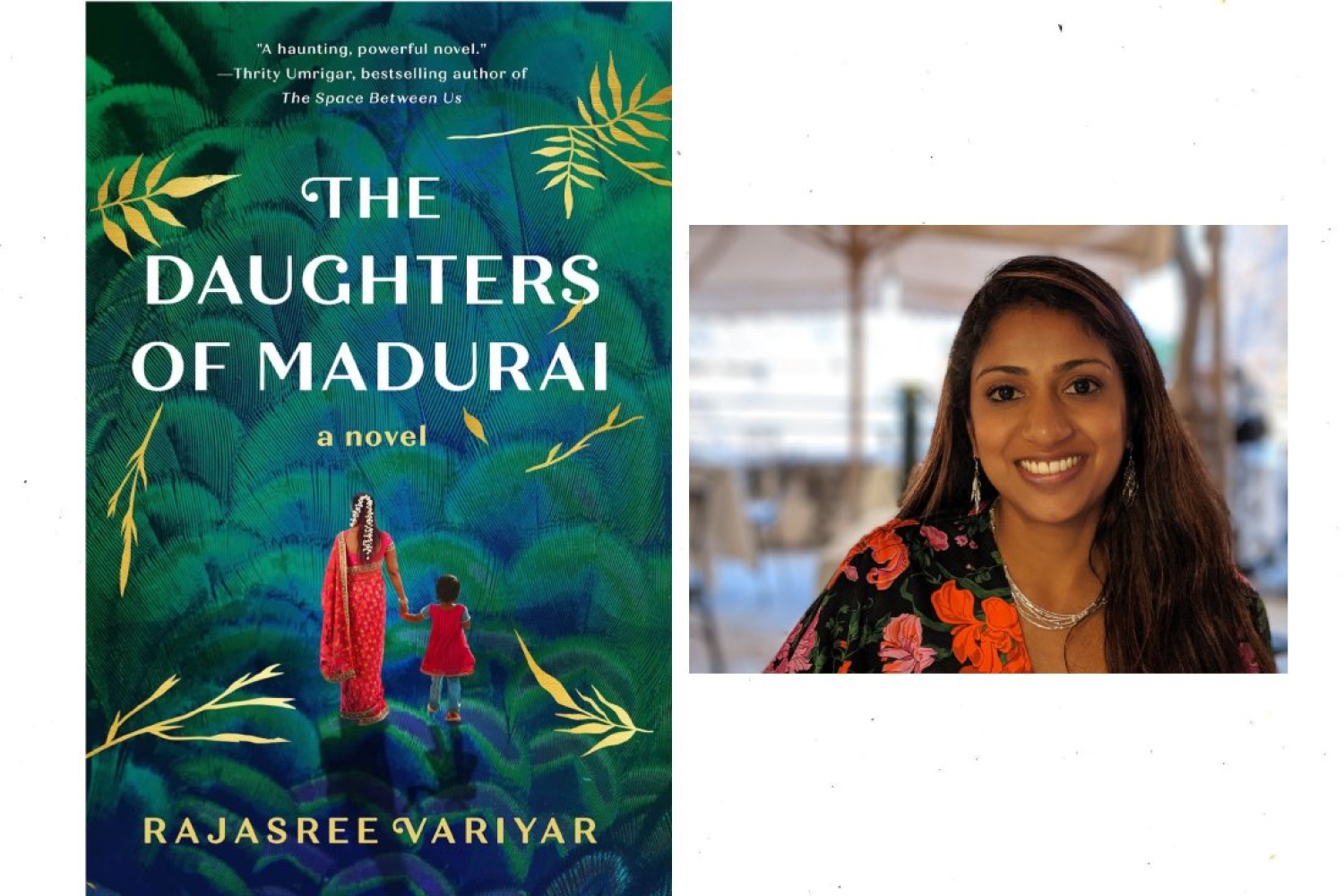

“I have a memory from my childhood of watching the eve- ning news with my family at home in Sydney. There was a segment about a case of female infanticide in Bangalore, where I was born, and the thought that that baby girl could have been me struck me almost immediately. Since that time I’ve been fascinated by the issue. I wanted to explore the whys of something as heinous as the killing of baby girls, something that continues to occur so close to where my own family members are from and still live. The more I looked into it, the more I was drawn to the complexity of the issue and the more I began to understand it. Importantly, I got to know more about the lives of the individuals impacted by it, and that’s what I wanted to tell a story about,” reveals Rajasree Variyar of the origin of her debut novel, The Daughters of Madurai.
Below, the new yet important literary voice unpacks her novel for us further:
THE BOOK
Usilampatti, 1993. Janani is a young woman who is pregnant with yet another girl. With one living daughter already, Janani knows that her mother-in-law will do to this baby what she has done to Janani’s other girls – killed them. She’s determined that this child will not suffer that fate, but what will it take to save her baby’s life? Sydney, 2018. Nila’s mother has an unspoken past. But Nila has a secret of her own. When her grandfather dies, she accompanies her parents back to India for the first time in years. There, she begins to unravel the shocking truth of her mother’s past – and her own. Will she find the courage to speak her own truth?
THE CONTEXT
When I began to look more into female infanticide in India, I discovered that there were pockets of the practice in taluks in and around Madurai. There was a significant amount of focus on this area by researchers and journalists, who investigated towns such as Usilampatti (where much of the novel is set), Salem, Theni and Dindigul, with quite a lot of media coverage in the 1980s and early 1990s.
My father’s family actually moved to Madurai in the 1970s, and live quite close to Usilampatti – this personal connection was a key reason why I decided to set the novel in Madurai. The very generous Women’s Emancipation and Development Trust, based in Chellampatti, were happy to allow me to spend time with them and learn more about the work they do supporting women and girls, and the wonderful people I met on this trip were a huge inspiration for the novel.
THE CREATION
My creative process is quite fluid! I wrote the initial couple of chapters to get an idea of the emotion of the novel and to understand Janani’s voice, and then wrote a structuraloutline. I then wrote a first draft, which was quite different to what the novel has now become! I tend to use a mixture of planning and free-flowing writing.
As an Indian-Australian woman, the blend of cultures has always been integral to my sense of identity, and I feel very privileged to be able to have such insight into verydifferent ways of life. That dichotomy of experience is what I wanted to explore in the novel – Nila is only one generation – a couple of decades – away from her mother, and yet her experience is so very different. Being able to understand each-other’s contexts is fundamental for Janani and Nila’s relationship. I think it’s so very important that we are able to cultivate the empathy to understand different cultures, understand and respect our similarities as well as our differences, as this is fundamental to building a cohesive global society.
THE CORE
At the core of this novel is the strength of individuals and their relationships with each other. In particular, the novel explores the strength of the bond between mother and daughter, and a love that can help transcend seemingly insurmountable obstacles. And finally, the novel is about hope, that change has come and will continue to transform the status of women and girls in Madurai and beyond.
THE CHALLENGE
I think the greatest challenge for me was finding the time! I worked full-time and also completed my Masters in Creative Writing part-time alongside writing the novel, so carving out enough time to gain momentum with my writing was a real balancing act. Also, as this is my first full-length novel, there was a steep learning curve to undergo to find a structure that worked and to maintain momentum and tension over more than ten thousand words! My wonderful agent and editors were extremely supportive throughout – I wouldn’t be where I am without them.
This article is an all exclusive from our April EZ. To read more such articles, follow the link here.
Words Nidhi Verma
Date 29-04-2023